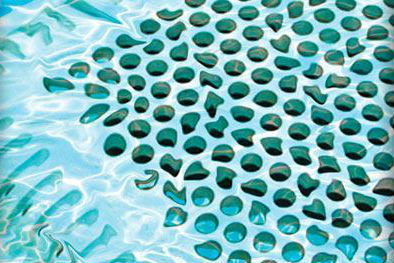Individuals who wish to voice their opinions regarding VGB compliance take note: the standard used to determine a pool’s or spa’s compliance with the federal pool and spa safety law has been updated and released for public comment.
The last official rewrite of this standard took place in 2007. Then, APSP worked with the Consumer Product Safety Commission, which had been charged with implementing and enforcing the Virginia Graeme Baker Pool and Spa Safety Act. The main goal was to provide specific instructions for testing the products for compliance and certification. Once VGB went into effect, the standard-writing committee and CPSC added update bulletins in response to a massive drain-cover recall in 2011.
This time around, the group did not seek extensive or substantial changes, but rather to expand and clarify, especially issues regarding how the products are applied in the field, such as how the drains should be plumbed, acceptable field modifications and expiration dates.
“Those issues … are where we’ve had entrapments since VGB passed,” said Steve Barnes, head of the APSP Technical Committee.
The writers especially sought to settle the issue of expiration dates. Manufacturers assign an active window for their products, after which they are meant to be replaced. Generally speaking, drains have a lifespan of 3 to 7 years. However, since the enactment of VGB in 2008, the question has arisen as to when that time period begins and what the expiration signifies.
This draft says the life of a drain cover begins at installation, said Barnes, also director of science and compliance with San Diego-based AquaStar Pool Products. Once the cover expires, he said, the pool falls out of VGB compliance and is subject to closure.
The writers also sought to expand instructions to make sure that drain covers are installed properly, and used in the right applications. If the language passes, it would largely impact manufacturer instructions and testing. Manufacturers will have to test their drain covers to see how they perform in all configurations deemed appropriate. For instance, they will have to test the covers with every pipe size and sump configuration that the manufacturer allows. The instructions then will have to outline what pipe sizes are permitted, and address such questions as allowable sump sizes and where the pipe can connect to the sump (bottom, side or both). “Pipe size and location drastically change the passing flow rate of any [drain] cover,” Barnes said.
APSP also updated the language in the hopes of preventing in-field changes that can place swimmers in danger. For instance, manufacturer instructions will have to state what types of fasteners are allowed, to prevent the use of fasteners that could corrode over time and compromise the drain cover’s security.
“At the top of everyone’s list was to make sure that the instructions are based on product that’s actually been tested,” Barnes said. “So now every pipe size and pipe orientation that a drain cover manufacturer wants their product to be used on has to be tested, and it has to have specific instructions that go along with it.”
“Then any modifications to a product not authorized in the instructions will void the product’s VGB certification and, by extension, void the pool’s compliance.”
To reflect this focus past the drain cover itself, the new language also introduces a new term — suction outlet fitting assembly (SOFA). This describes everything from the drain cover to the suction pipe.
There may still be time to comment: Stakeholders have until June 26. Contact Susan J. Hilaski, APSP’s director of standards promotion and adoption at shilaski@apsp.org or (703)838-0083.


